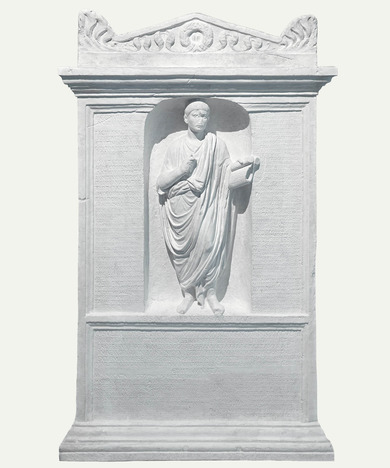Alphabet
There is no such thing as the alphabet. There are three types which are systematically distinct form one another (…), namely, the syllabary, the consonant-based and the true alphabet. They do not have a historical order and do not represent a process of evolution at the end of which the true alphabet results.
Peter Stein, Schriftkultur, 2006
The term alphabet is generally used today to mean the same as script. Unlike the characters used in hieroglyphics or ideogramic systems, the characters of the alphabet represent the smallest sound units of a language that are free from meaning. In around 1200 BCE, the Phoenicians created an alphabet that read from right to left and existed of 22 consonants. This spread in the Palestinian-Syrian region right to the Mediterranean and became the role model for further alphabets. The first complete alphabet made up of consonants and vowels was developed by the Greeks around 800 BCE. Because of trading and seafaring, they had come into contact with the Phoenician principle of writing, adapted it to their own language and added vowels. The Greek alphabet came via the Etruscans to the Romans in the seventh century BCE and there it was again adapted to the local language to form the Latin alphabet. The Romans introduced left-to-right reading and completed the aesthetic shapes of the letters based on geometric forms to create the Latin majuscule letters.
The success of the Phoenician principle of writing presumably also had to do with the low number of characters. In Ancient Greece and Rome, alphabetic script permeated the oral culture, gave strong new impulses to the political leadership and intellectual life and led to the development of book culture.

